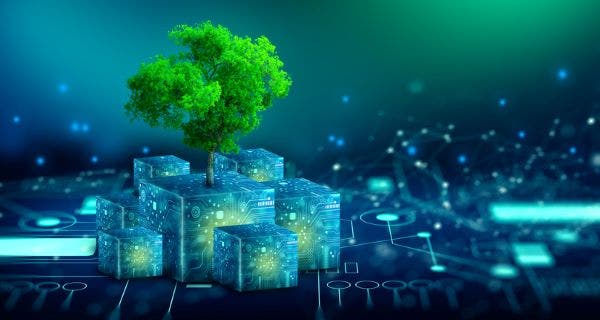OVHcloud Global Environmental Director Grégory Lebourg explains how frugality and sustainability are in the DNA of OVHcloud

OVHcloud Global Environmental Director Grégory Lebourg reveals how a vertically integrated operating model, advanced water-cooling technology, and circular economy practices deliver a cloud that doesn’t cost the earth.
Computing recently published its annual cloud sustainability research. A key finding was that OVHcloud, operator of more than 40 datacentres globally, outperformed peers of similar scale and the hyperscale “big three,” to earn first place in the cloud sustainability top 10.
The company excelled across multiple categories including indirect environmental impact, emissions, water usage, renewable energy adoption, waste management, circular economy practices, and transparency. Scores can be seen below.
At the helm of OVHcloud’s environmental strategy is Grégory Lebourg, Global Environmental Director. Lebourg’s prior role as Director of Global Infrastructure meant deep involvement in the planning, design, and deployment of OVHcloud’s datacentres and he is thus uniquely positioned to articulate how frugality and sustainability are embedded in the company’s operations.
Circular economy in action
“We rely on two principles,” Lebourg says.” The first is the vertical integrated model, the fact that we assemble our own servers. We don’t build the data centre from scratch; we renew existing buildings. The fact that we control the whole value chain is a very powerful lever.
Image

Description
Grégory Lebourg, OVHcloud
“We have also extended the lifespan of the of the hardware platforms for more than nine to 10 years on average. And then at the end of this phase, we send them back to the factory where they were produced in the first place -a factory that we own and operate ourselves. We disassemble everything and test all the components for future reuse.”
Lebourg estimates that after refurbishment and testing. approximately 30% of the components coming out of OVHCloud’s datacentres are redeployed by OVHCloud. A further 50% are sold onto the resale market and the remaining 20% which are either unrepairable or obsolete are recycled.
Partnering with companies like Terra Nova, OVHcloud recycles significant quantities of electronic waste. In 2024 alone, nearly 9 tons of motherboards were processed, recovering over 25% by mass in valuable materials such as copper (about 2 tons), iron (500 kg), gold (1 kg), and smaller amounts of nickel, cobalt, and platinum.
The company’s zero waste to landfill or incineration goal is grounded in this closed-loop approach, enabled by their control over manufacturing and refurbishment processes—setting OVHcloud apart from competitors who all seem to share similar targets, but are not achieving the kind of reductions in waste-to-landfill required to reach them.
Water cooling for efficiency
Datacentres are notoriously thirsty, with water consumption, often measured in millions of gallons or megalitres. Some cloud providers including AWS and IBM provide limited data, arguing that absolute quantities are not a meaningful metric. Alternative metrics such as Water Usage Effectiveness (WUE) are provided instead. But absolute quantities matter, particularly if datacentres are in areas of high-water stress, which many are.
In FY2022, OVHcloud used 125.7 megalitres of water—significantly less than Salesforce (153 million gallons) and Oracle (545.5 ML). Lebourg attributes this to OVHcloud’s advanced server-level water cooling technology, now in its fifth generation.
“We are really leading the pack in terms of mastering water-cooling technology at the server level,” he says. “Water cooling technology relies on two principles. The first one is the direct liquid to chip, which is a closed circuit with a water block installed on the CPU or GPU to capture the heat at the source. This is, globally, 70% of heat generated by the server.”
The remaining 30% is managed via airflow captured by rear door heat exchangers, transferring heat to a second closed water circuit.
Lebourg seems genuinely baffled as to why any company would choose to cool a datacentre differently. In addition to using significantly less water than evaporative cooling, the combination of direct liquid-to-chip cooling and rear door heat exchange is less energy intensive, meaning that PUE is reduced to barely more than 1.1. It’s also far more scalable than other cooling methods utilising heat exchange such as immersive cooling.
Balancing cost and sustainability
Research shows that while environmental impact is increasingly important to enterprise tech buyers, cost remains the primary decision driver. Lebourg says he’s noticed a shift in European procurement processes.
“We reply to a lot of RFPs, where the in the multi criteria decision process, we see that the weight of the environmental criteria is increasing. For public RFPs, we are close to 20% of decision based on environmental topics in the RFP and in the private sector it is 12%.
“Buyers are demanding transparency and proof,” he continues. “They scrutinize our KPIs, carbon emissions data, and compliance with standards like the GHG Protocol which they are very knowledgeable about.”
Lebourg welcomes the prospect of prospective cloud customers driving greater transparency but emphasises that OVHcloud’s sustainability is not a reactive market response but a foundational element of their business model. That frugality was encoded into the DNA of the business from day one, and it means that customers don’t have to choose between competitive pricing and sustainability.
“Independence and frugality are the foundations of the company. Frugality means doing the same thing with less resources. What is good for the economic agenda is good for the sustainability agenda as well. We aren’t driven by a market eager for frugality. We are frugal by design.”
